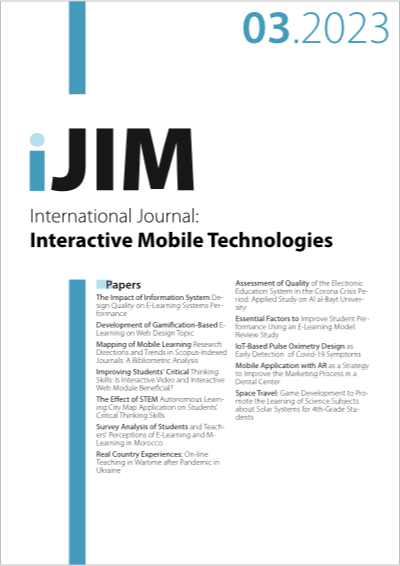Assessment of Quality of the Electronic Education System in the Corona Crisis Period: Applied Study on Al al-Bayt University
DOI:
https://doi.org/10.3991/ijim.v17i03.34745Keywords:
Electronic education, Service Quality, Satisfaction, learning site content, tangible physical featuresAbstract
In response to the coronavirus crisis, higher education institutions have partially or fully transformed into electronic education systems (EESs). This paper presents the results of a student survey conducted at AL al-Bayt University to assess the quality of the electronic educational system (EES) during the coronavirus pandemic. The study variables addressed by the questionnaire were tangible physical features (TPFs), flexibility (FEES), examination construction and management (ECM); admission, storage, and registration management (ASRM), security and privacy (S&P), learning site content (LSC); and students’ level of satisfaction (LoS). The exploratory study methodology was applied to 324 students at AABU, where the research data were collected using a Google Docs questionnaire and distributed to students. The results highlighted that students were satisfied with the quality of EES implemented by AABU during the lockdown period in terms of tangible physical features (TPF) and learning site content (LSC) and there was a statistically significant relationship between TPF and LSC. However, some undesirable features were reported, such as a lack of adequate infrastructure for students, which enabled them to interact effectively with their teachers to gain the target of applying EES. Consequently, AABU needs to implement effective measures to improve and increase the quality and level of satisfaction with EES. Finally, electronic education is a more adapted, smooth, and affordable alternative than traditional face-to-face education.
Downloads
Published
How to Cite
Issue
Section
License
Copyright (c) 2023 Wafa Alsharafat, Wesam Kurdi Alrashdan, Omar Munther, Mohammad Yamman, Amaar Khalid

This work is licensed under a Creative Commons Attribution 4.0 International License.



